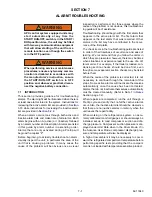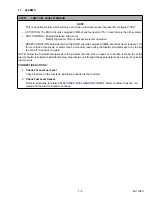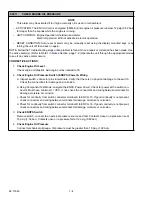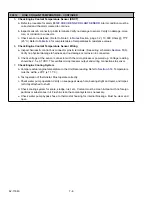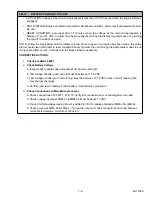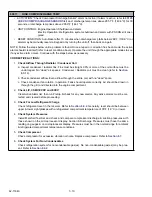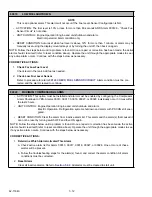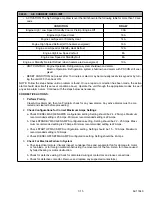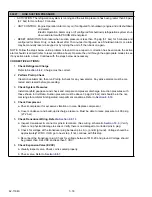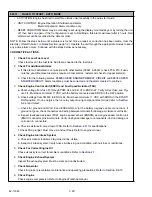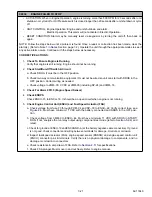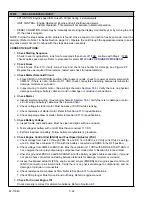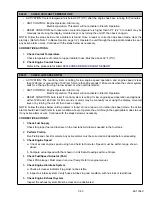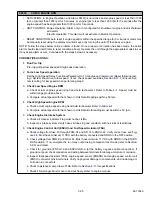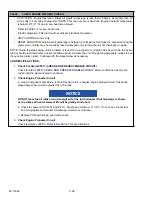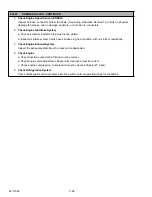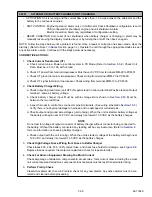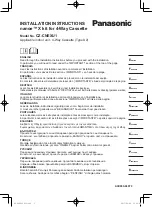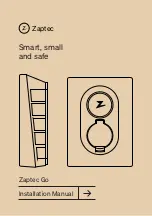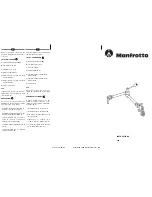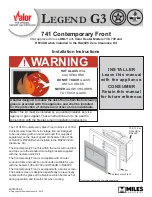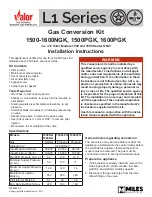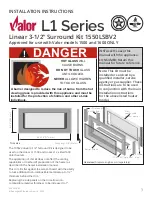
62-11640
7–14
00022
LOW SUCTION SUPERHEAT
• ACTIVATION: “Check Suction Temperature Sensor” and/or “Check Evaporator Temperature Sensor”
alarms are not active (refer to Alarm 000127 and/or 000131 first) and:
Compressor suction superheat (Compressor Suction Temperature (CST) minus saturated tempera-
ture for Compressor Suction Pressure (CSP) is less than 8°F (4.4°C) for more than 3
−
4 minutes.
• UNIT CONTROL: Engine Operation: Engine and unit shutdown and alarm.
Electric Operation: Refrigeration system shutdown and alarm with PSCON still ener-
gized.
• RESET CONDITION: Auto reset after 15 minutes, or alarm may be manually reset using the display
mounted keys or by turning the unit off, then back on again.
NOTE: Follow the steps below until a problem is found. Once a repair or correction has been made, the active
alarm should clear itself (refer to reset condition above). Operate the unit through the appropriate modes to see
if any active alarm occurs. Continue with the steps below as necessary.
CORRECTIVE ACTIONS:
1.
Check System
Pressures
a. Check Suction and Evaporator Pressure reading at the compressor. While the compressor is run-
ning and the SMV is greater than 70% open, verify evaporator and suction pressure read within 3
psi of each other, with evaporator pressure slightly higher than suction pressure. If not, check
transducers. refer to Pressure Transducers,
b. Install manifold gage set and check and compare compressor discharge, suction and evaporator
outlet pressure to the Unit Data readings. Refer to
for instruction on comparison.
2.
Check Evaporator
Section
Check evaporator section, return air bulkhead, air chute, and the evaporator coil (for cleanliness and
airflow). Refer to
3.
Check Suction and Evaporator Temperature
Sensors
a. Check Evaporator and Suction temperature sensor insulation integrity, and make sure insulation is
properly installed. Repair or replace any insulation if required. Loose or missing insulation will
cause inaccurate refrigerant temperature readings.
b. Inspect sensor & connector. Verify there is no damage to sensor. Verify there is no damage, mois-
ture, or corrosion in connector.
c. Check sensor resistance (Refer to Note 3 in
Section, page 7-2.) 10,000 Ohms @ 77°F
(25°C.) See
for complete table of temperatures and resistance values.
4.
Check Expansion Valve
(EVXV)
a. Visually inspect valve. Check that the coil is seated properly.
b. Check operation of valve. Refer to
.
5.
Perform Pretrip
Check
Clear Active Alarm list, then run Pretrip & check for any new alarms. Any active alarms must be cor-
rected and cleared before proceeding.
Summary of Contents for Vector 8500
Page 23: ...62 11640 1 6 1 3 SAFETY DECALS ...
Page 24: ...1 7 62 11640 62 03958 ...
Page 25: ...62 11640 1 8 ...
Page 26: ...1 9 62 11640 ...
Page 27: ...62 11640 1 10 ...
Page 125: ...62 11640 SECTION 6 MESSAGECENTER PARAGRAPH NUMBER Page 6 1 MESSAGECENTER MESSAGES 6 1 ...
Page 321: ......
Page 322: ......


